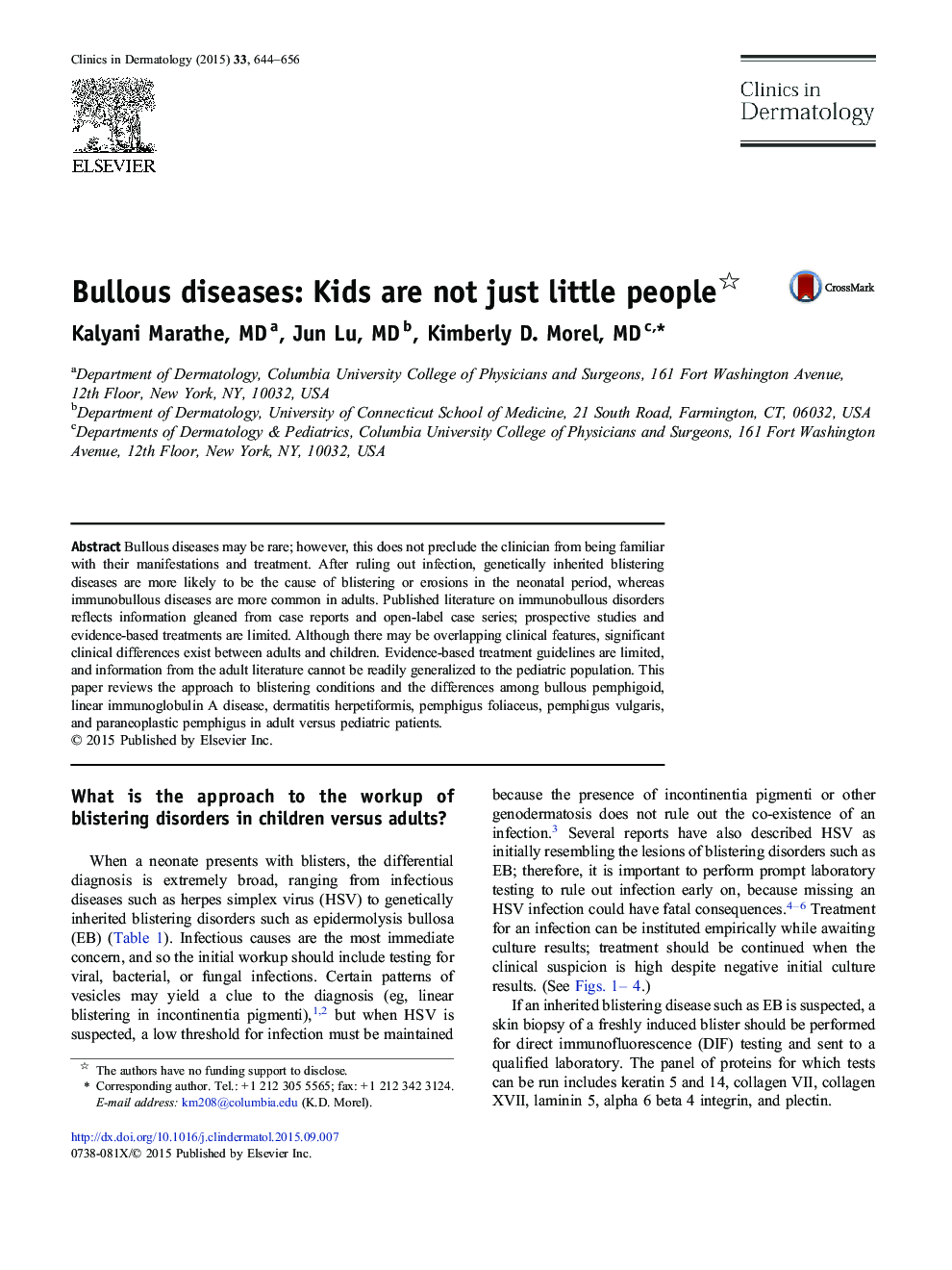| Article ID | Journal | Published Year | Pages | File Type |
|---|---|---|---|---|
| 3194186 | Clinics in Dermatology | 2015 | 13 Pages |
Bullous diseases may be rare; however, this does not preclude the clinician from being familiar with their manifestations and treatment. After ruling out infection, genetically inherited blistering diseases are more likely to be the cause of blistering or erosions in the neonatal period, whereas immunobullous diseases are more common in adults. Published literature on immunobullous disorders reflects information gleaned from case reports and open-label case series; prospective studies and evidence-based treatments are limited. Although there may be overlapping clinical features, significant clinical differences exist between adults and children. Evidence-based treatment guidelines are limited, and information from the adult literature cannot be readily generalized to the pediatric population. This paper reviews the approach to blistering conditions and the differences among bullous pemphigoid, linear immunoglobulin A disease, dermatitis herpetiformis, pemphigus foliaceus, pemphigus vulgaris, and paraneoplastic pemphigus in adult versus pediatric patients.
